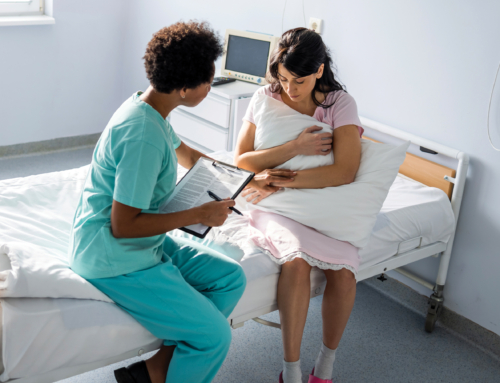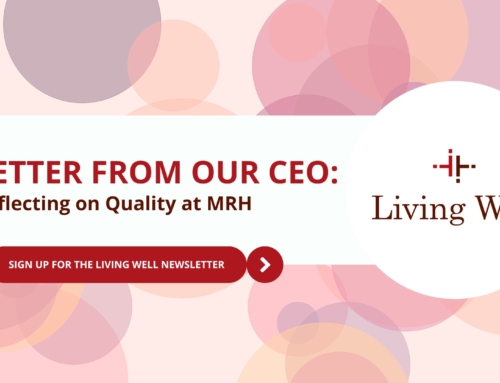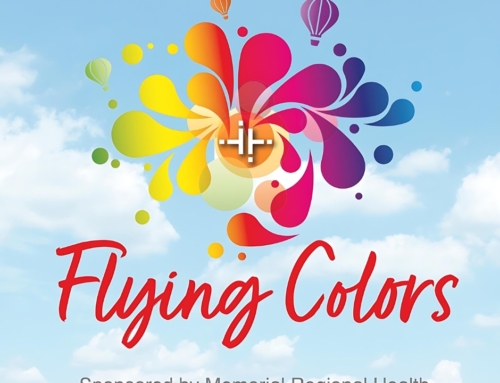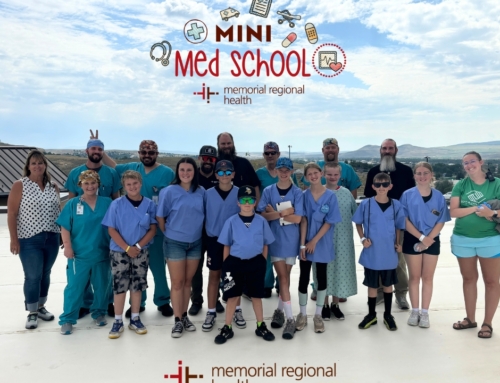The Importance of Preventive Breast Cancer Screening
Don’t miss any updates from Memorial Regional Health by signing up for our every-other-month Living Well newsletter here.
When I turned 40, I started getting annual mammograms, and in nine years, I missed only one. I can generally find an excuse to skip out on things I really don’t want to do, but getting a mammogram did not cause me any fear or anxiety since I have no family history of breast cancer, I’d never had any abnormal mammograms, and mammograms, at least for me, were pretty quick and painless. I know this is not the case for all women.
Last July, I scheduled my routine mammogram at Memorial Regional Health (MRH) for a Wednesday, and two days later, I got the report in my patient portal stating that I needed to have a follow-up exam. This didn’t bother me as almost every woman I know has been called back at least once, including my mom and sister. In many cases being called back was just precautionary, and it didn’t mean there was anything to worry about.
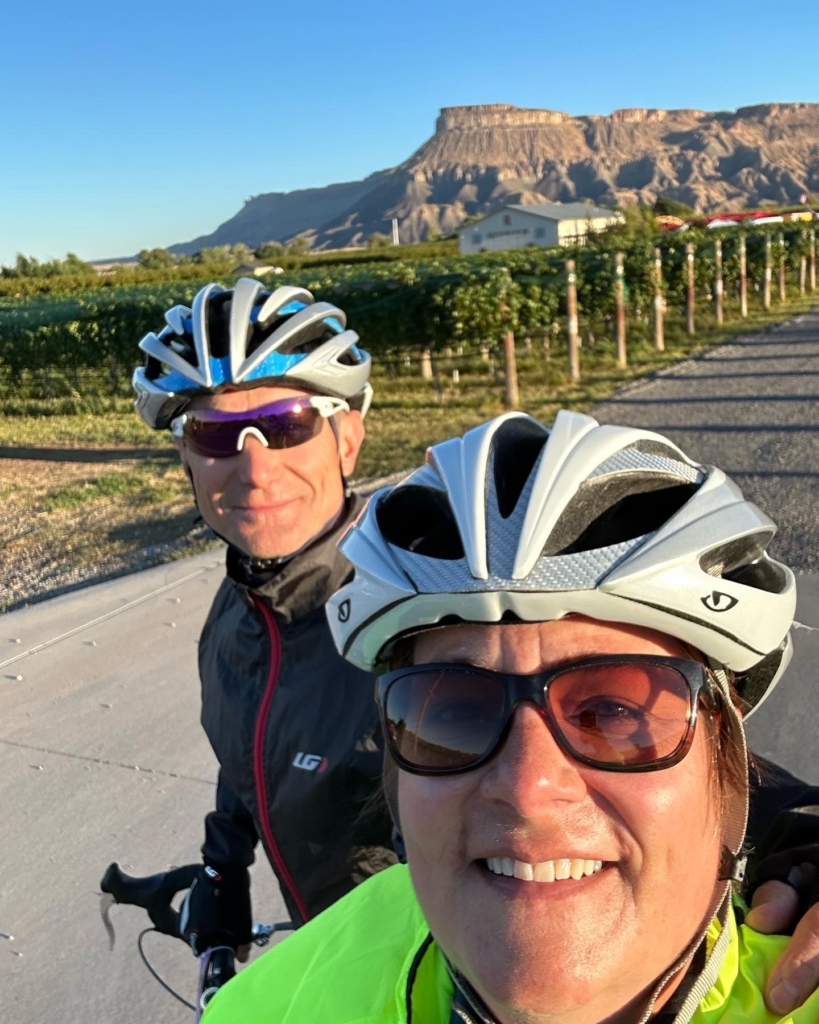
Jennifer Riley & Husband
Two weeks later I was seen for my follow-up at MRH. I had no angst about this follow-up appointment. I reassured myself that this was just a precaution. They did a diagnostic mammogram and then they asked me to wait for the radiologist. A few minutes later, Dr. Holt came out to talk to me. I was completely unprepared to hear the news. He let me know that what he saw was very likely a cancerous mass, but to be sure, I needed a stereotactic biopsy.
I was able to schedule my biopsy very quickly, and on August 5th, 2022 I got the confirmation that I had breast cancer – ductal carcinoma in situ (DCIS). The radiologist who called me with the news referred me to the Calaway-Young Cancer Center at Valley View Hospital in Glenwood Springs. I chose to receive my cancer care there because Memorial Regional Health has a relationship with the oncology program at Valley View. I knew that all of my cancer treatment could be done in one place.
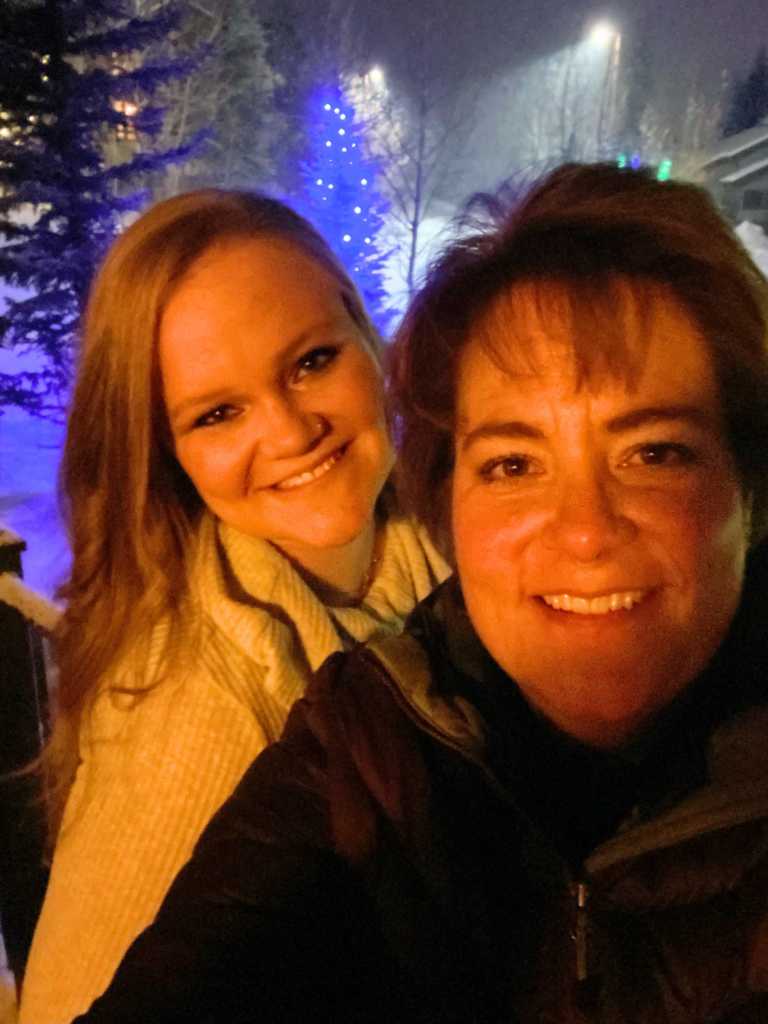
Jennifer Riley & Daughter
Learning that I had breast cancer sent me spinning. It was completely unexpected – I was 49 with no family history of breast cancer. How was this even happening? The weeks between the news and talking to a doctor gave me time to start worrying about everything. My first thought was, what if I die? Intellectually I knew it was probably unlikely, but when I heard the word cancer, that was my gut response. Then I thought about how this was going to impact my family. My daughter Caroline was a new mom, and she needed my help. My husband Steve has always been by my side, but what if this was too much? How were my parents and sister going to deal with the news? I felt emotionally responsible for everyone and everything. I let myself spin out of control for a while, but eventually I started learning everything I could about what this diagnosis would likely entail, and I settled down.
Because my diagnosis was straightforward, I was able to navigate most of the decisions on my own, but I did reach out to MRH’s local oncology Physician Assistant, Bridget Barnhart.
Bridget was great about answering my questions, and she reassured me that my decision to go to the Calaway-Young Cancer Center was a good one. Bridget’s knowledge about cancer and cancer treatments helped me go into my first appointment prepared. It also helped to know that chemotherapy, should it be needed, was available locally.
When I met the surgeon, Dr. Betsy Brew, her first words to me were confident and reassuring – the cancer was essentially stage zero, and this experience was going to be a blip. She said that DCIS was absolutely curable with surgery and radiation. She scheduled surgery and sent me to radiation oncologist Dr. Peter Rossi.
Dr. Rossi shared with me that I was a candidate for Intensity Modulated Radiation Therapy (IMRT) because my DCIS was caught early. After surgery and healing, I would only need five days of twice per day radiation treatments. When it was all said and done, I was able to finish my cancer treatment before my 50th birthday in December.
My cancer story is short and sweet because the cancer was caught early. The American College of Obstetrics and Gynecology (ACOG) recommends women begin annual screening mammograms starting at age 40, but no later than age 50.
A common misperception is that breast cancer is generally hereditary. In reality, only about 5-10% of breast cancer cases are considered hereditary. (source: Cancer.org) Another misperception about breast cancer is that women who don’t have any symptoms – lumps, dimpling skin, or other changes – don’t need screening. In fact, many breast cancer diagnoses are made long before any symptoms appear. (source: Cancer.org)
Breast cancer is considered the most common cancer in the world, accounting for almost 13% of all new cancer cases. It is the most commonly diagnosed cancer among women. (source: BreastCancer.org) This year, it is estimated that almost 300,000 women will be newly diagnosed with an invasive form of breast cancer, and nearly 60,000 new cases of ductal carcinoma in situ will be diagnosed. It is also estimated that about 43,000 women will die from breast cancer. (source: Komen.org) The good news is that when breast cancer is caught early, before it has spread, it is highly curable. (source: Cancer.org)
Cost should not be a factor for most women who are eligible for screening mammograms. The majority of insurances cover 100% of the cost of screening mammograms. For women who are 40 or older and do not have insurance, funding is available through MRH’s Population Health department. This funding is provided through the Women’s Wellness Connection grant, and it covers a clinic visit, a mammogram, and follow-up breast exams if they are needed. MRH also offers discounted mammograms each October for women who don’t have insurance and don’t qualify for financial assistance.
This past August, I celebrated the one year mark since I first learned I had breast cancer. I’ve been cancer-free for almost a year. Looking back, the whole experience was exactly what Dr. Brew said it would be – a blip. I’m thankful that I kept up with my mammograms. I’m grateful that I had support at home and at work. This was a journey, and thanks to early detection, it ended up being a relatively short one. I am happy to report that my life is back to normal and filled with all the things I love – family, friends, work, and everything that good health allows me to do.
Sincerely,
Jennifer Riley, MHA
Chief Executive Officer



